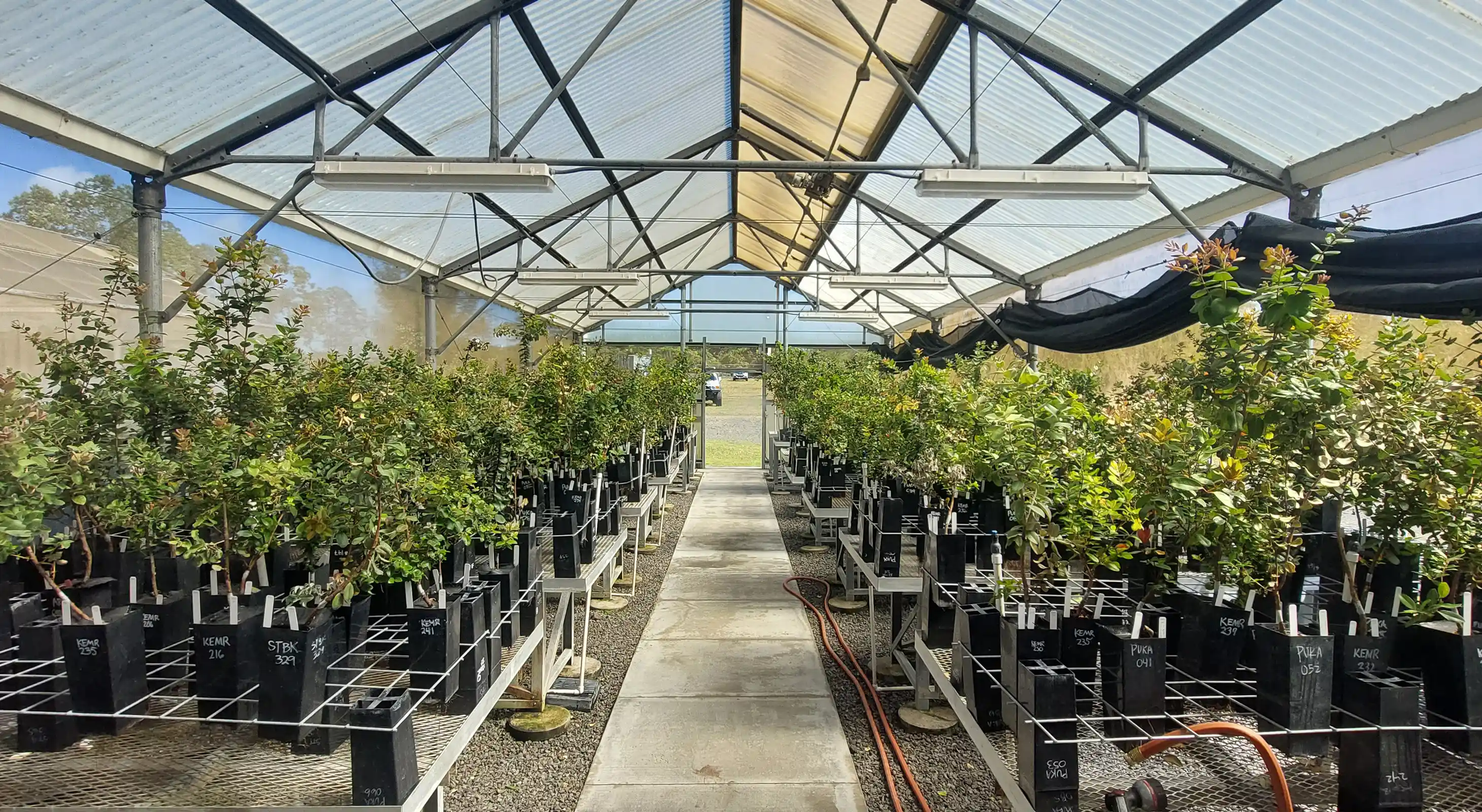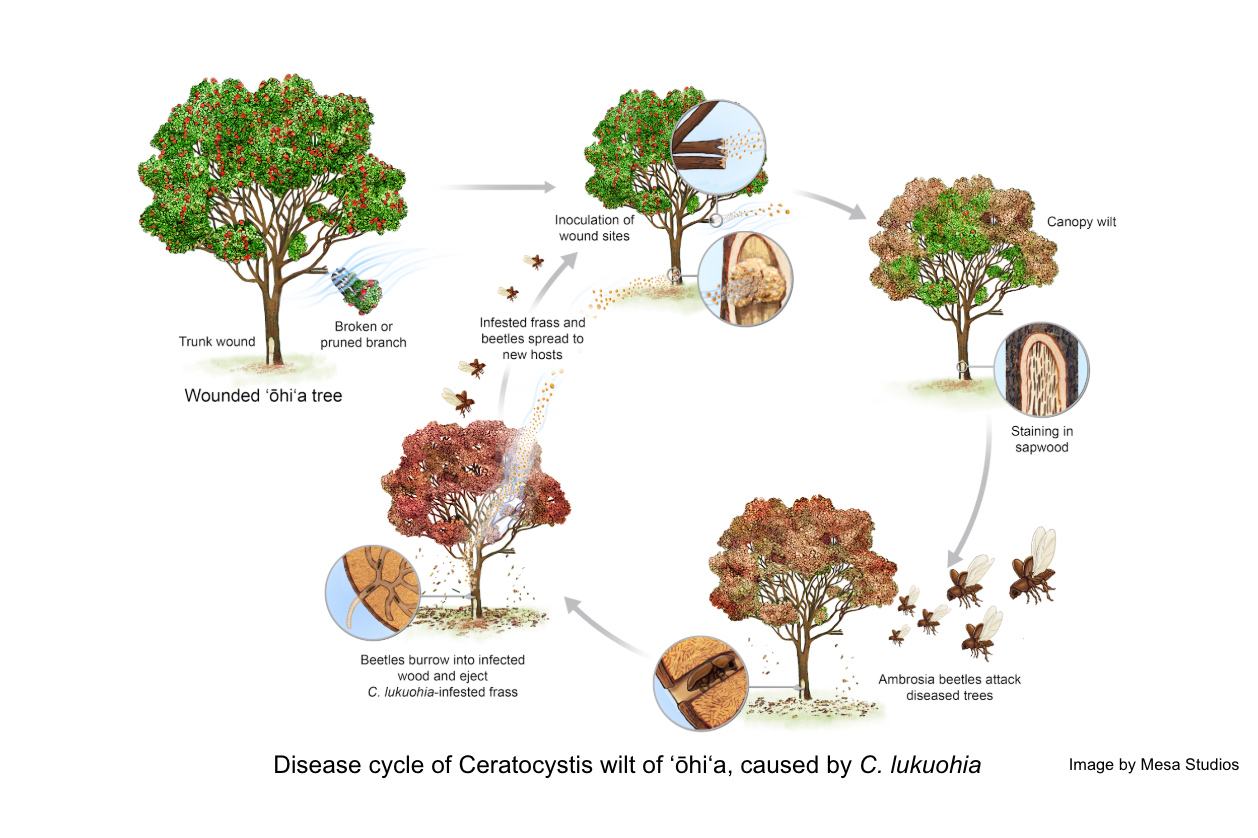Background / justification
ʻŌhi‘a (Metrosideros polymorpha) is the backbone of Hawaiʻi’s native forests and the watersheds that sustain our water supply throughout the state. ʻŌhi‘a covers nearly one million acres of land statewide and is foundational to Native Hawaiian cultural practices and lifeways. Rapid ʻŌhi‘a Death (ROD), caused by two non-native fungal pathogens (Ceratocystis lukuohia and C. huliohia), is responsible for the death of over one million ʻōhiʻa trees across 270,000 acres of Hawaiʻi’s native forests. The ʻŌhi‘a Disease Resistance Program (ʻŌDRP) was established in 2018 to locate and develop ROD-resistant ‘ōhiʻa as a solution for our reforestation needs.
Project objectives
- To perpetuate and restore ʻōhiʻa across Hawai‘i to preserve the ecology, culture, and communities dependent on this tree species and the ecological services it provides.
- To collect, propagate, and screen ʻōhiʻa seedlings or rooted cuttings from ROD-affected and healthy forests to identify disease resistant parent trees for reforestation.
- Collect ʻōhiʻa seed and propagate plants from a diversity of seed zones across Hawai’i to establish site-specific breeding populations.
- Create a network of common gardens to support research plantings and seed orchards for germplasm preservation, and long-term field trials with a focus on understanding the potential impacts of climate change.
Approach
The ʻŌhiʻa Disease Resistance Program (ʻŌDRP) operates in heavily impacted forests in Hilo and Puna, identifying and propagating ROD-resistant survivor trees. Over 100 mother trees were tested, with 40% showing moderate to high resistance to Ceratocystis lukuohia. These promising trees will be outplanted for further testing and seed production.
In collaboration with partners, the program surveys, collects, and screens ʻōhiʻa seeds from across the state, considering factors like ROD impact, geography, and elevation. Wild-collected seeds are germinated at the USFS Institute of Pacific Islands Forestry in Hilo, where thousands of ʻōhiʻa plants are grown. The team has developed expertise in accelerating ʻōhiʻa growth, producing inoculation-ready plants in under two years, despite the species’ naturally slow growth.
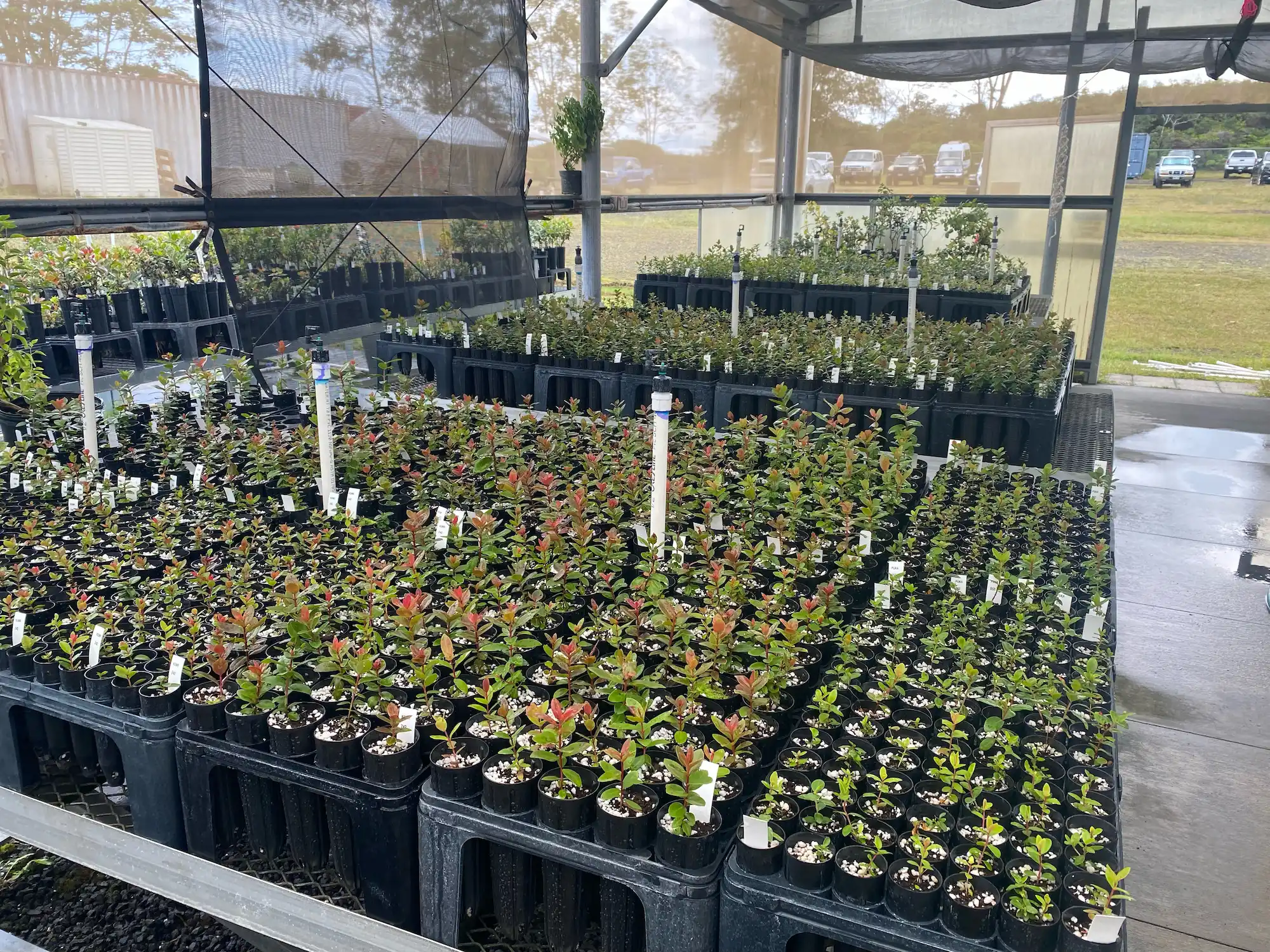
Key findings / accomplishments
ROD Screening Trials
Trial 4 (Aug 2023 – Mar 2024): 355 plants, 87 genotypes.
Trial 5 (Feb – Jul 2024): 375 plants, 90 genotypes.
Trial 6 (Dec 2024 – Jun 2025): ROD resistance screening for 310 plants across 36 genotypes from Hawaiʻi Island and Maui.
Commercial clone study. Testing plants that commercially available to public for purchase. 180 plants, 15 genotypes.
Mother Tree Monitoring
Revisited and monitored all mother trees from initial clonal Trials 1 and 2 at Keaukaha Military Reserve.
Future plans
Seedling Testing
Seed collections provide a chance to harness the extensive natural genetic diversity of the ʻōhiʻa tree throughout Hawai’i. Collaborating with Hawaiʻi seed banks, ODRP will examine ʻōhiʻa seeds sourced from various geographic regions across the islands. These seeds are gathered from robust mother trees, cultivated at our nursery at the USDA Forest Service in Hilo, and the resulting seedlings undergo screening for resistance against ROD. Our objective is to identify and foster mother trees that yield ROD-resistant seedlings across the state, serving as valuable breeding stock for the establishment of seed orchards.
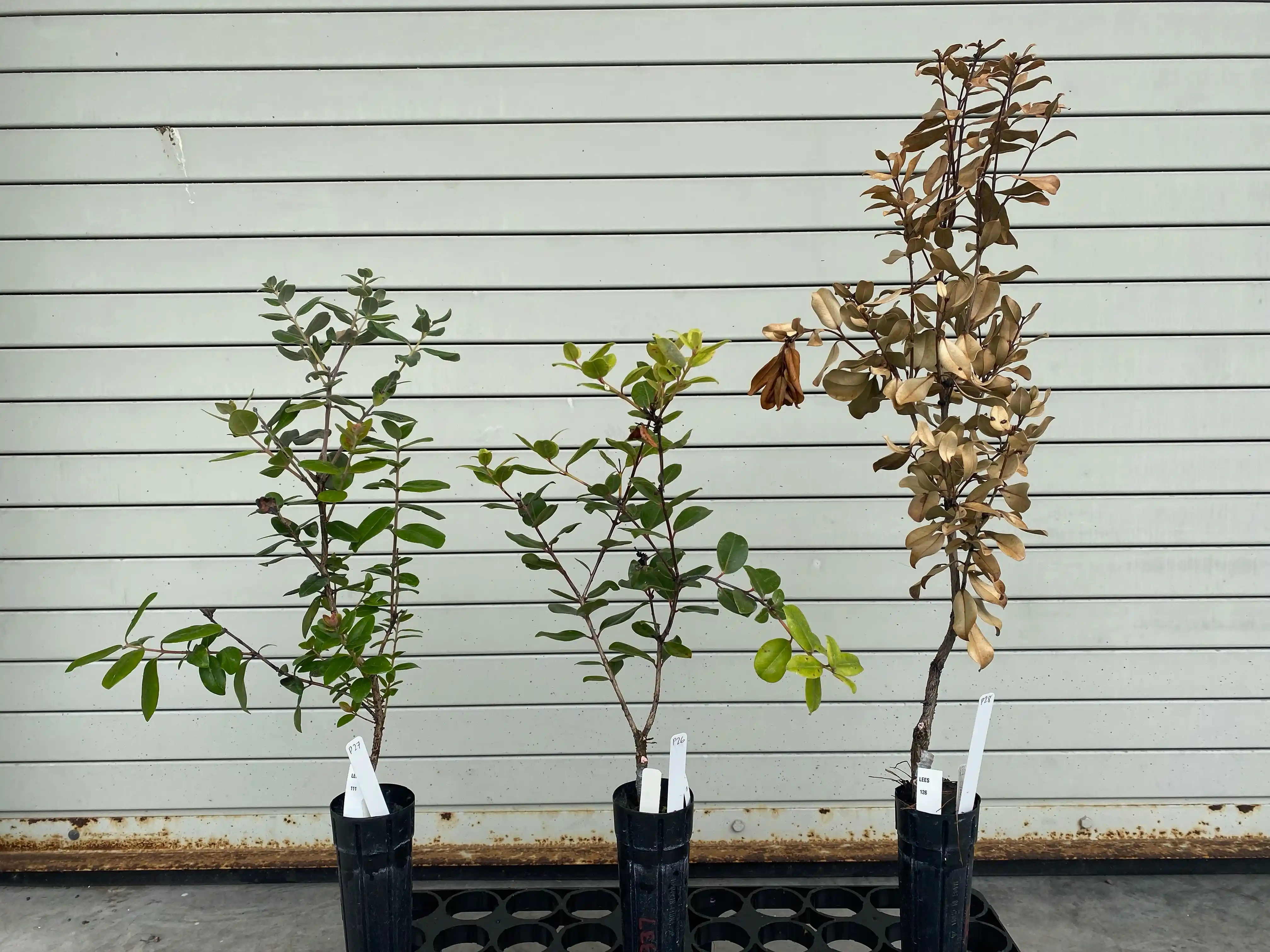
Root Inoculation Trial
A total of 200 ʻōhiʻa trees will be tested for ROD infection through root wounding, with the trial conducted in two rounds of 100 trees each.
Keaukaha Military Reserve ‘Ōhiʻa Common Garden
A 2.5-acre common garden has been cleared and fenced for field testing and clone banking of survivor trees from greenhouse trials. 200 planting holes have been prepared for trees that performed well in Trials 1–3. Additionally, GPS mapping has been conducted as part of the preliminary layout planning for the garden.
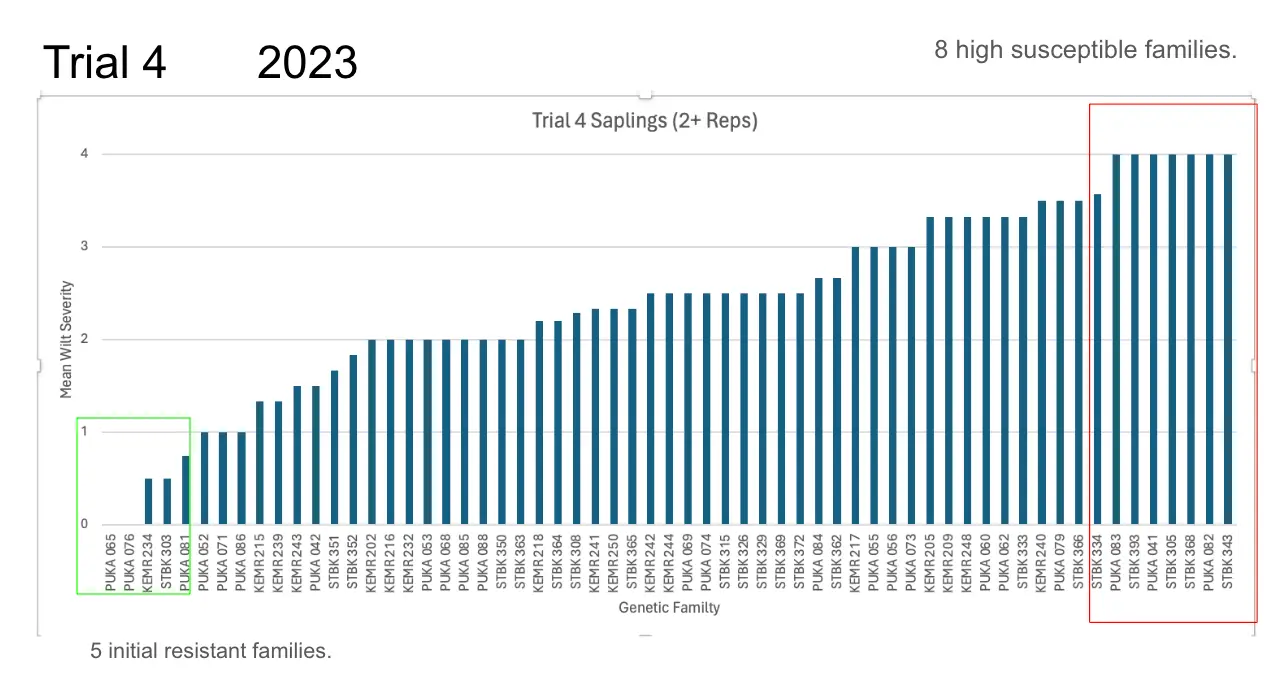
Partners / stakeholders / collaborators
- USDA Forest Service, Washington Office (major financial supporter*)
- State of Hawaiʻi Division of Forestry and Wildlife (major financial supporter*),
- University of Hawaiʻi at Mānoa, College of Tropical Agriculture and Human Resources, Cooperative Extension (financial supporter*)
- Hawaii National Guard Environmental Office (financial supporter*)
- USDA Agricultural Research Service (Pacific Basin Agricultural Research Center).
- Laukahi, the Hawai’i Plant Conservation Network
- Purdue University
- Tropical Hardwood Tree Improvement and Regeneration Center
- Hawaiʻi Agriculture Research Center
- Kalehua Seed Conservation Consulting
- Arizona State University, Center for Global Discovery and Conservation Science
- University of Hawai‘i at Hilo, Spatial Data Analysis and Visualization Lab

